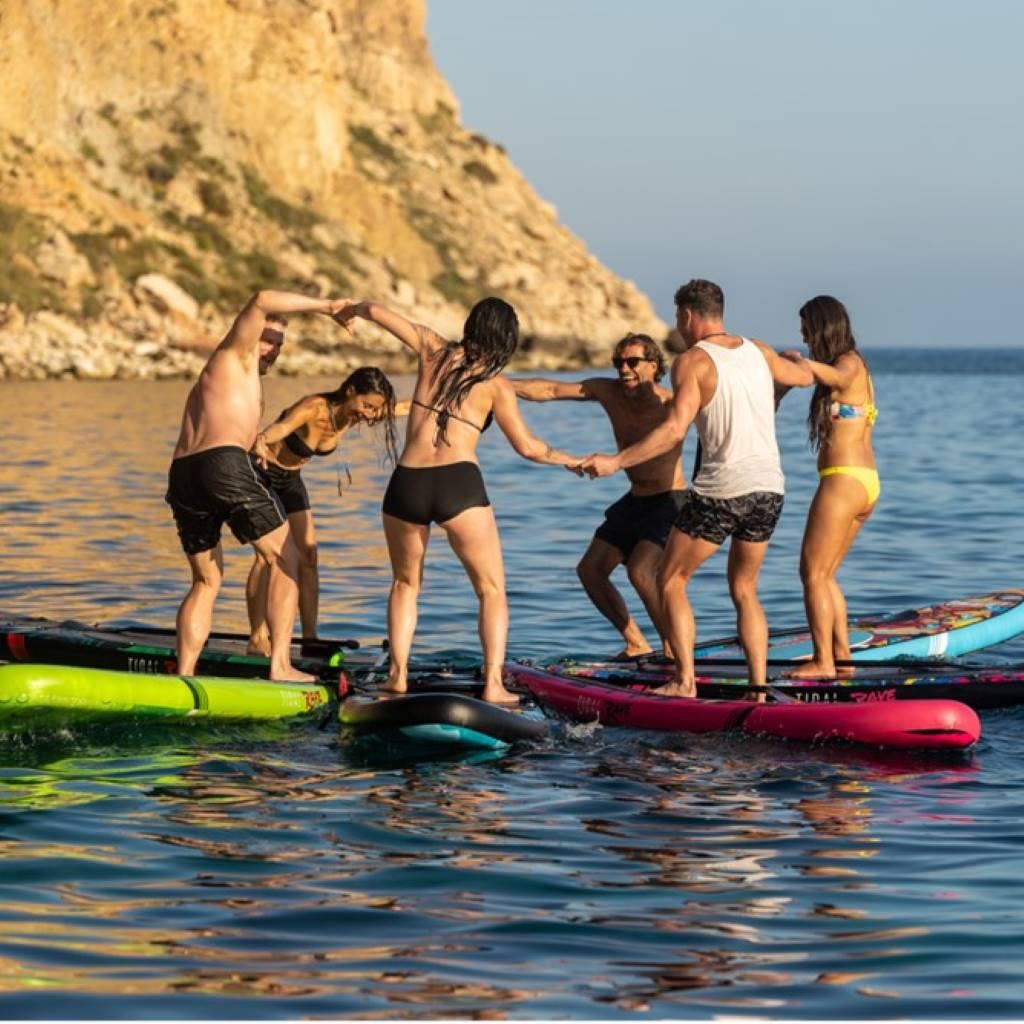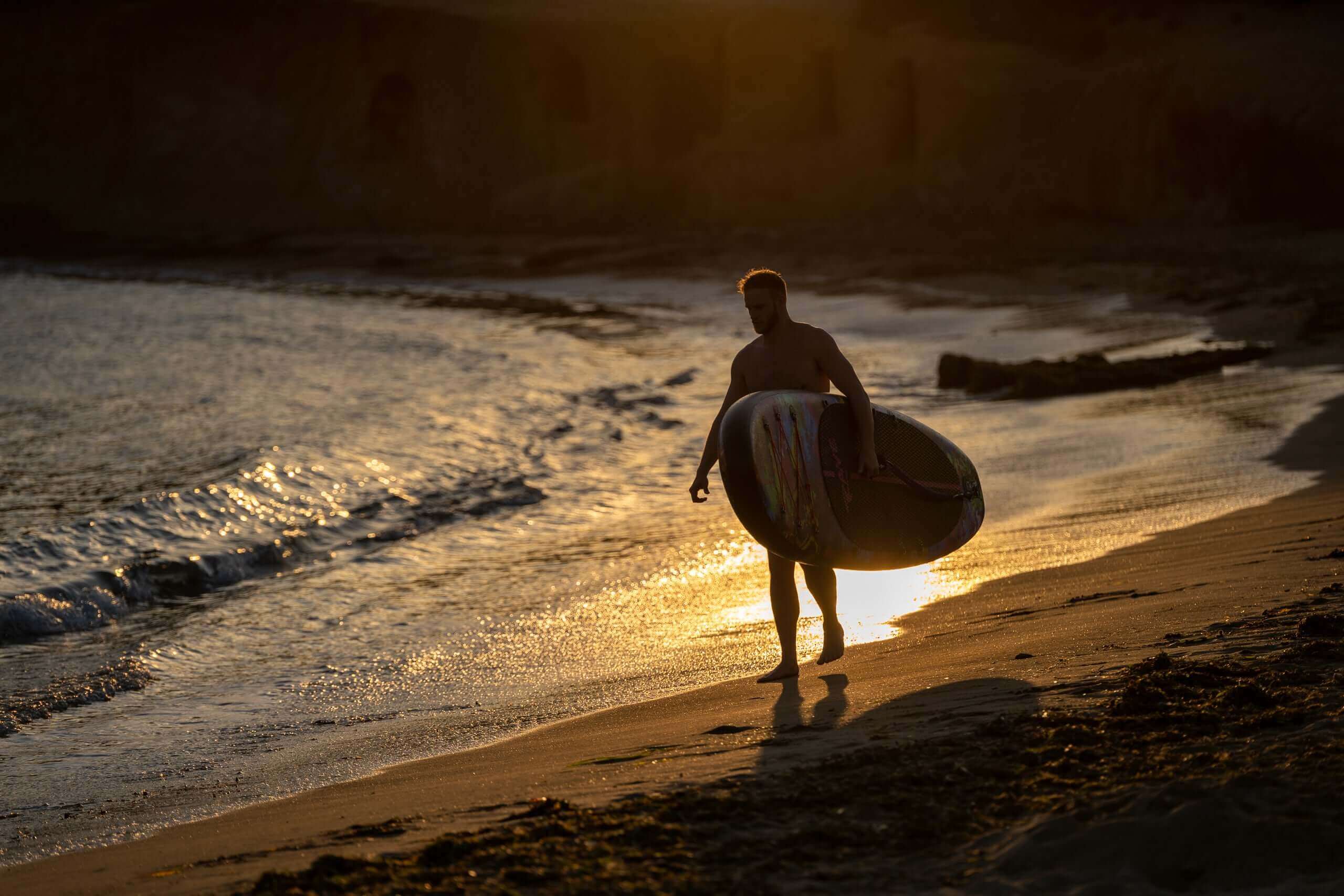Paddle boarding has quickly ascended the ranks to become one of the most popular water sports for adventure seekers of all ages - and for good reason! However, as with any water sport, potential dangers can lurk beneath the surface - so it’s fair to wonder: is paddle boarding actually safe? The short answer is yes, but it’s still important to take certain precautions when hitting the waves.
So if you're contemplating trying out this new hobby, this guide will steer you through the essentials of paddle boarding safety, so you can ensure that your adventure remains both enjoyable and secure. Let’s dive in!
The Appeal of Paddle Boarding
Paddle boarding, at its core, is an activity that marries the thrill of surfing with the tranquillity of kayaking; whether you're a fitness enthusiast drawn to its workout benefits or a nature lover seeking to explore waterways from a new perspective, paddle boarding offers something for everyone. Plus, its accessibility to beginners makes it an inviting choice for those looking to dip their toes into water sports - you’ll just want to ensure you’re equipped with the right beginner paddle board.
Evaluating Potential Risks
While paddle boarding is inherently safe, understanding and respecting the potential dangers is key for any enthusiast: factors such as unexpected weather changes, water currents, and the presence of other water users can introduce risks. So if you're new to this sport and contemplating whether or not it's a safe venture, the answer largely depends on your preparation, awareness, and respect for the water's power.
Safety Gear and Equipment

Check out our Buoyancy Aid Jacket
One of the most straightforward ways to mitigate risk is through the proper use of safety gear and equipment: this means a life jacket is non-negotiable, even if you're an experienced swimmer. And remember, it's not just about your ability to swim; it's about being prepared for any situation where you might become incapacitated or exhausted. For more insights into selecting the right life jacket and understanding its importance, take a look at our guide on life jackets for paddle boarders.
Weather and Water Conditions

Before setting out, it's also imperative to check the weather and water conditions, especially in the UK; sudden storms or strong winds can turn a leisurely paddle into a dangerous situation! Similarly, being aware of tides, currents, and water temperature can help you avoid areas that might be hazardous or beyond your skill level.
When you're well-informed, you can choose the best times and locations for a safe paddle boarding experience.
Importance of Paddle Boarding Lessons
Even if paddle boarding seems straightforward, taking lessons from a certified instructor can significantly enhance your safety and enjoyment; these lessons will cover essential skills such as proper paddle techniques, how to fall safely, and how to get back on your board in deep water. Additionally, instructors can provide valuable insights into reading water conditions and navigating safely among other water users, so it’s worth the investment.
Awareness of Surroundings and Water Traffic
It’s also important to remember that paddle boarding isn’t just about you and the water; it's also about being aware of your surroundings: this includes other people enjoying the water, whether they're swimmers, boaters, or fellow paddle boarders. Understanding right-of-way rules and learning how to signal your intentions can prevent collisions and ensure a harmonious experience for everyone involved.
Emergency Preparedness
No one likes to think about emergencies, but being prepared can make all the difference: carrying a whistle, a waterproof phone case, and a small first aid kit can help you signal for help and address minor injuries. It can also be a good idea to inform someone of your paddle boarding plan, including your location and expected return time, ensuring that help can be sent if you don't check in as planned.
Responsible Paddle Boarding Practices
Lastly, responsible paddle boarding means respecting the environment and the wildlife you encounter: stick to designated areas, avoid disturbing wildlife, and always carry out what you carry in. By practising Leave No Trace principles, you contribute to preserving the natural beauty and health of our waterways for future generations.
The Bottom Line
Ultimately, while paddle boarding offers an accessible and enriching way to enjoy the water, it's essential to approach it with an awareness of the potential dangers - and just because you’re skilled on the water, it doesn’t mean you’re immune to its dangers! By equipping yourself with the right knowledge, skills, and safety gear, you can minimise risks and maximise your enjoyment. Remember, the key to a safe and fun adventure on the water lies in preparation and respect for the natural elements. So gear up, stay safe, and paddle on to your next aquatic adventure.




